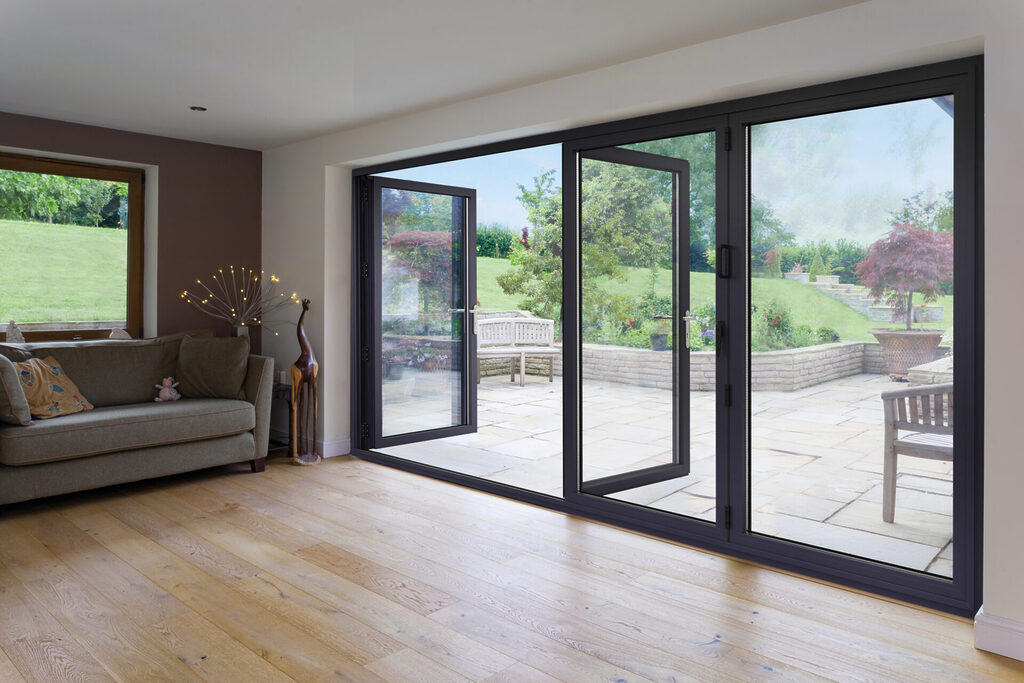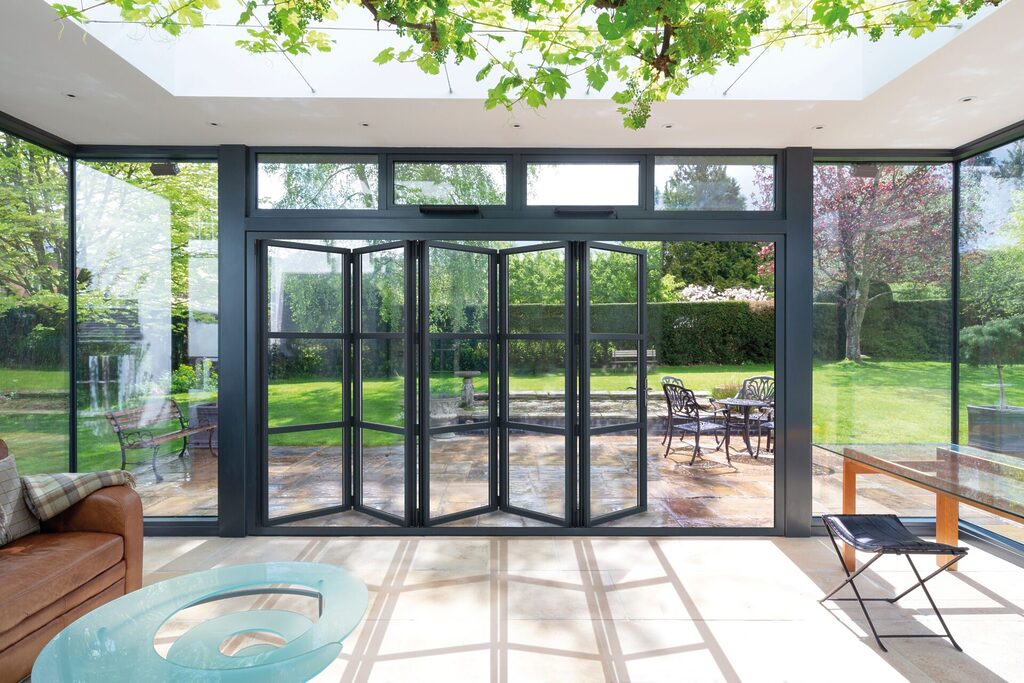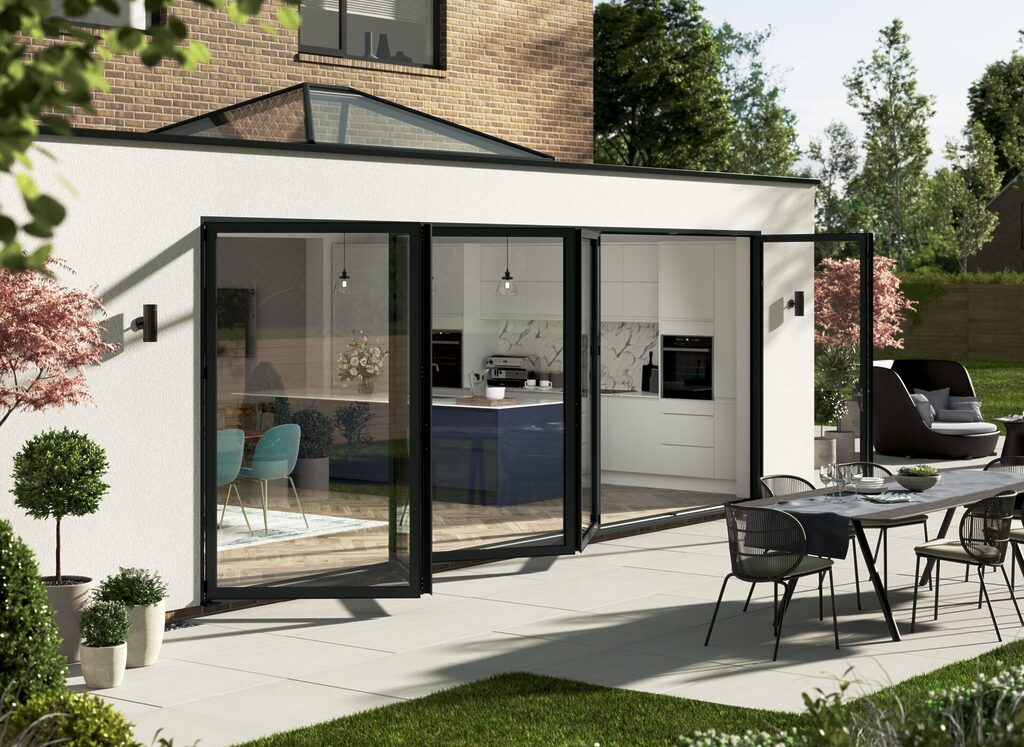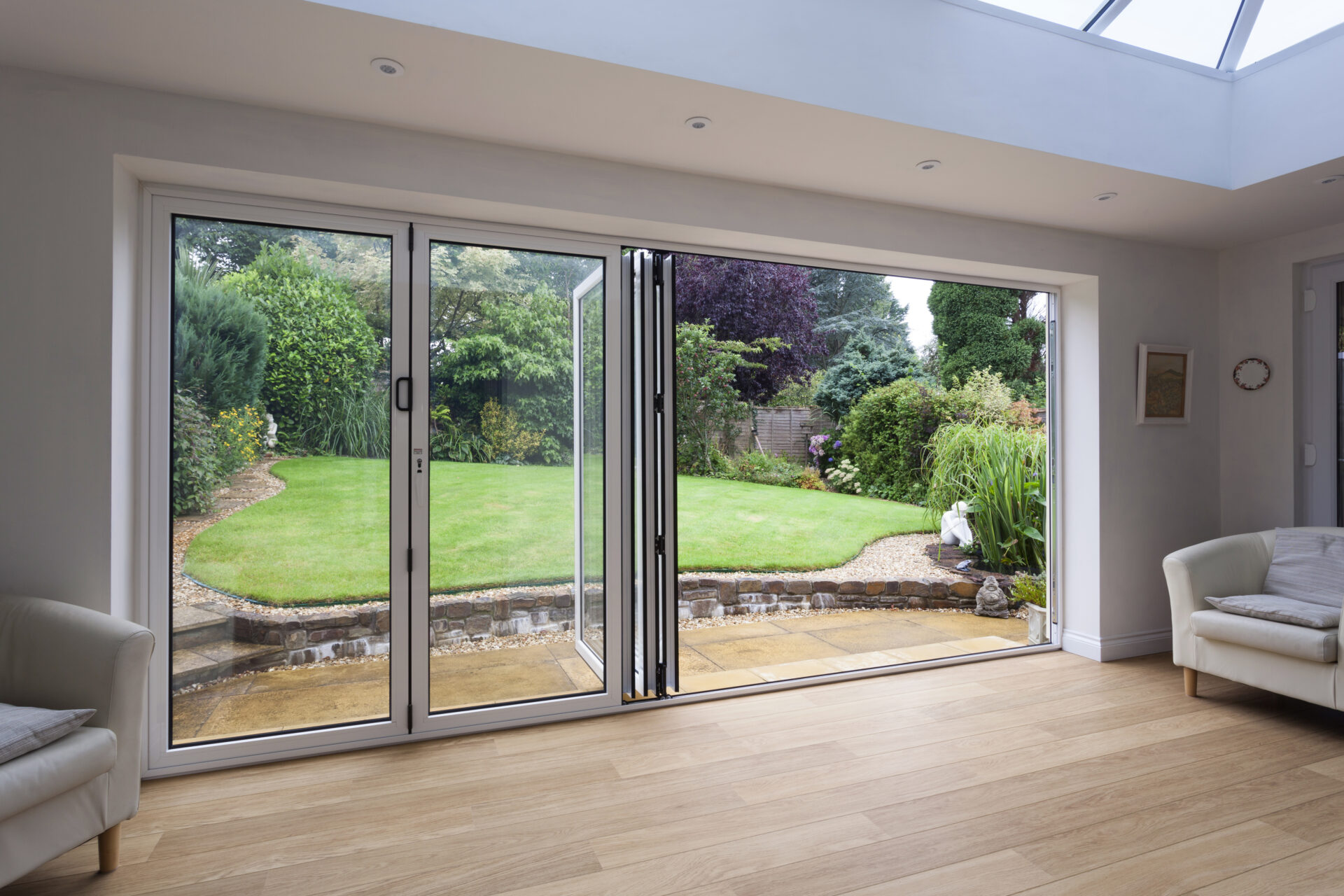Last Updated on 17 October 2024 by Tia Ellahi
Best Ways to Stop Bifolds Blowing in the Wind?
From adjusting the alignment and installing weatherstripping to reinforcing the track system and using door closers, there are plenty of ways to stop your bifold doors blowing in the wind.
Bifold doors are a fantastic addition to any home, seamlessly blending your indoor and outdoor spaces.
They let in plenty of light and air, making your home feel more open and connected to the outdoors.
However, if you live in a windy area, there is a risk that your bifold doors can blow open unexpectedly.
Whether it’s a light draft or a strong gust, the result is the same: discomfort, energy inefficiency, and potential damage to your doors or surrounding structure.
Whether you’re looking for quick fixes or more permanent solutions, we’ve got you covered.
Looking for something in a hurry? Jump right too it:
8 Ways to Stop Bifold Doors Blowing in the Wind
1. Check and Adjust Alignment
One of the most common reasons bifold doors blow open is poor alignment. Over time, doors can shift slightly due to regular use or even small changes in your home’s foundation or structure.
When the panels are misaligned, gaps can form, allowing wind to seep in and apply pressure, eventually forcing the doors open.
Start by carefully inspecting the alignment of your bifold doors. Look at how the panels meet—are they flush, or is there a slight gap?
In most cases, you can adjust the alignment using a screwdriver to tighten or loosen the hinges, as well as tweak the door’s placement within the frame.
A small adjustment can make a big difference in how tightly the doors close, minimising any chance for wind to sneak in.
If you’re unsure how to realign your bifold doors, consult your manufacturer’s guide or consider hiring a professional to ensure they are perfectly aligned.
2. Install Weatherstripping
Weatherstripping is a versatile, cost-effective solution that can help stop your bifold doors from blowing open while also boosting your home’s energy efficiency.
Available in various materials like foam, felt, and rubber, weatherstripping creates a tight seal around the edges of your doors, blocking drafts and keeping the wind at bay.
To install weatherstripping on bifold doors, first clean the edges of the door to ensure the adhesive will stick properly.
Then, measure and cut the weatherstripping to fit along the sides, top, and bottom of the doorframe. Peel back the adhesive and press it firmly into place.

3. Install a Door Sweep
A door sweep is a simple device that attaches to the bottom of your bifold doors to close the gap between the door and the floor.
These are especially useful if you notice a draft coming in from below your doors.
Door sweeps can be made from rubber, silicone, or metal, and they act as a barrier against wind, preventing it from blowing through the small space at the bottom.
It can be easily fitted by measuring your bifold door and cutting the sweep to size if necessary, before affixing it to the bottom of the door.
Aside from stopping the wind, door sweeps also help block out dirt, pests, and unwanted moisture. This small addition can make a huge difference in keeping your home comfortable year-round.
4. Use Magnetic or Hook-and-Loop Fasteners
If you need a quick and temporary fix, magnetic or hook-and-loop fasteners (like Velcro) can help hold your bifold doors securely in place.
These fasteners can be attached to the door and frame, providing extra resistance to wind pressure.
While this may not be a permanent solution, magnetic fasteners offer a strong hold without being visible, which means they won’t compromise the aesthetics of your bifold doors.
You can find these fasteners in home improvement stores, and they’re easy to install without professional help.
5. Add a Door Closer
For homes in windy areas, installing a door closer can provide a long-term solution to prevent bifold doors from blowing open.
A door closer ensures that your bifold doors automatically pull shut after being opened.
This keeps the doors from being left ajar long enough for a strong gust to blow them wide open.
Surface-mounted closers are visible and easy to install, while concealed door closers are hidden in the frame, maintaining the sleek appearance of your bifold doors.
Once installed, the door closer will control the speed at which the door closes, preventing it from slamming and keeping it tightly shut in windy conditions.

6. Check for and Fix Any Gaps
Even a small gap in your door frame or between panels can allow enough wind to push your bifold doors open.
Take some time to inspect your doors for gaps or cracks, especially around the edges and where the door panels meet.
You can fill these gaps with a flexible sealant designed for doors and windows.
By sealing these gaps, you’ll block out unwanted wind and prevent your doors from rattling in strong gusts.
7. Install Wind Deflectors
Wind deflectors, commonly used for car windows, can also be applied to bifold doors in particularly windy areas.
By installing wind deflectors on the outside of your home, you reduce the direct impact of wind hitting your doors.
These deflectors help to redirect the wind away from the door, minimising the likelihood of it being blown open and can be fitted above or around your bifold doors without detracting from their appearance.

You may also want to check out our other article on how to open bifold doors.
8. Reinforce the Track System
If you live in an area prone to strong winds, you may need to reinforce the track system of your bifold doors.
Over time, the tracks can become worn down or misaligned, which can make it easier for the doors to be pushed open by wind.
Replacing or reinforcing the tracks will ensure that the doors move smoothly and stay secure even in challenging weather conditions.
This is a more advanced solution, so you may want to consult a professional if you’re unsure about handling the installation yourself.
Keep Your Bifold Doors Safe from Windy Weather with GFD Homes
By implementing some of the fixes and more permanent solutions mentioned in this guide, you can keep your bifold doors secure and ensure that they remain closed, even in gusty conditions.
A little attention to your bifold doors can go a long way in enhancing both your comfort and the energy efficiency of your home.
So if you’re considering bifold doors and need that last puff over the line or have a few more questions, feel free to call our expert team on 01642 309 576 or book a visit to our state of the art showroom!
If you’re unsure how to implement some of the fixes mentioned in this article, don’t be afraid to contact a professional for help, or go back to the product manufacturer/ supplier.
FAQs about Bifold Doors Blowing in the Wind
How to stop French doors blowing in the wind?
Much like bifold doors, French doors can benefit from weatherstripping, door sweeps, and wind deflectors.
You can also install door stops or additional fasteners to keep them securely shut during windy weather. Make sure the doors are aligned properly and check for gaps that might allow wind to enter.
How to stop patio doors blowing in the wind?
Patio doors are typically larger and more exposed to the elements, so consider adding wind deflectors or a door closer to keep them in place.
Checking the alignment and installing weatherstripping around the frame can also help seal any gaps that allow wind to blow through.
Reinforcing the track system for sliding patio doors can also provide more stability.
How to stop door opening from wind?
To stop any door from opening in the wind, make sure it’s properly aligned and securely fastened.
Use weatherstripping or door sweeps to seal gaps, and install magnetic fasteners or door closers to ensure the door stays shut, even during gusty conditions.
How do you stop a bifold door from slamming?
A door closer can prevent your bifold door from slamming shut by controlling the speed at which it closes.
Alternatively, soft-close hinges can be installed to achieve a smooth, quiet close without slamming. These features not only stop slamming but also protect the door from wear and tear.
How to stop a UPVC door from blowing open?
For UPVC doors, weatherstripping and door sweeps are effective options to prevent them from blowing open.
You can also check the door’s hinges and alignment to make sure it’s closing tightly and securely. Consider adding magnetic fasteners or a door closer for additional security against the wind.
Can you insulate a bifold door?
Yes, you can insulate bifold doors by adding weatherstripping, door sweeps, or even insulated blinds.
These solutions not only stop drafts but also help improve energy efficiency, keeping your home warm in the winter and cool in the summer.
Insulating blinds or curtains can also provide an extra layer of protection during particularly cold or windy months.
